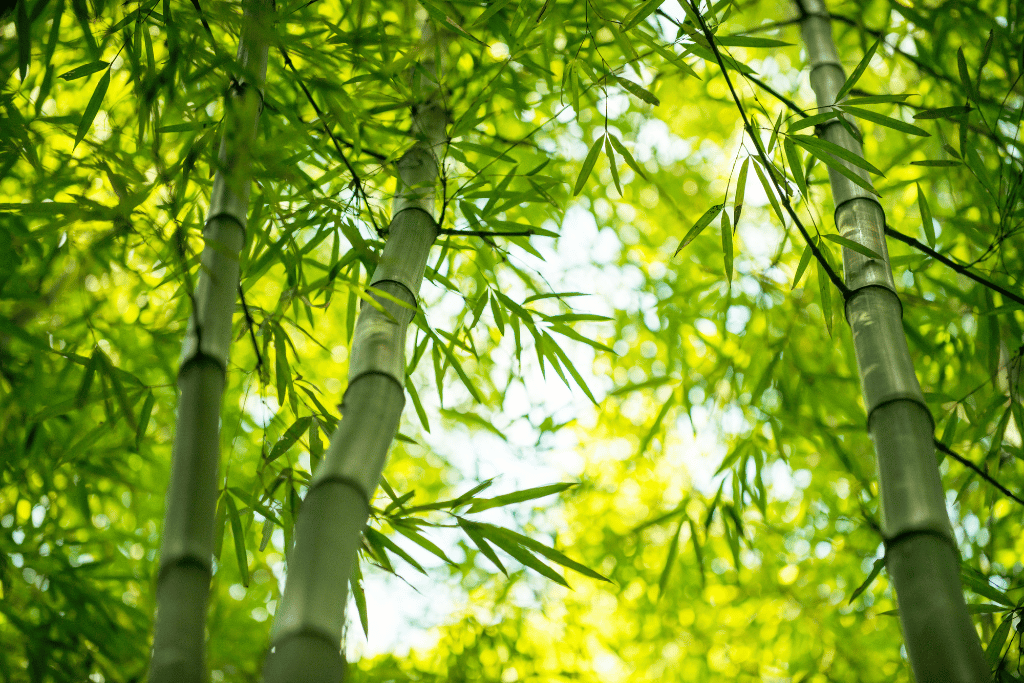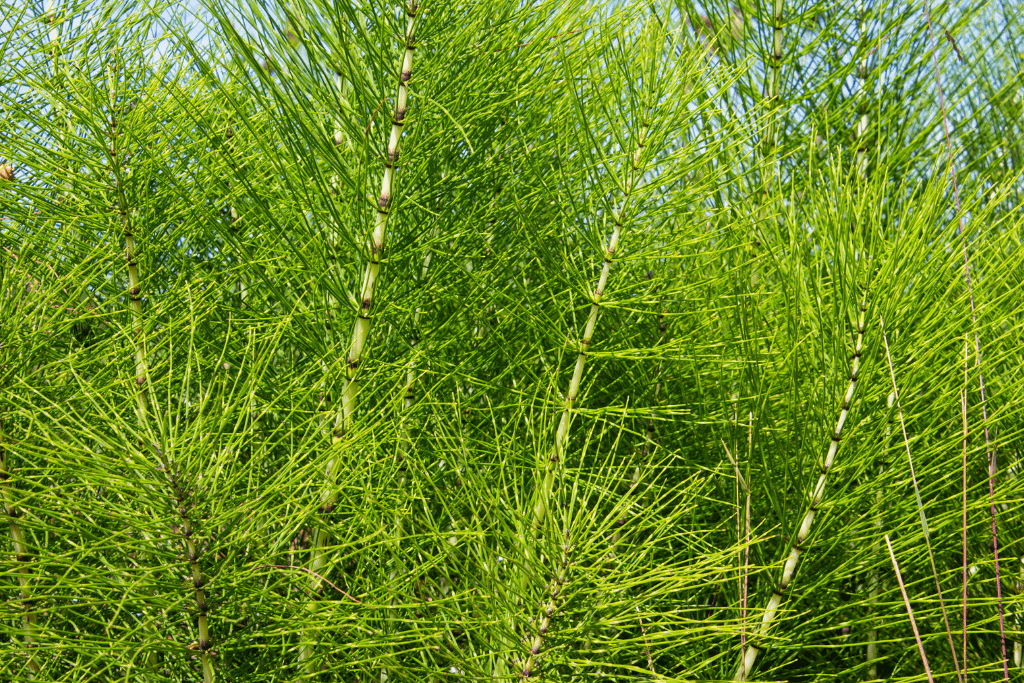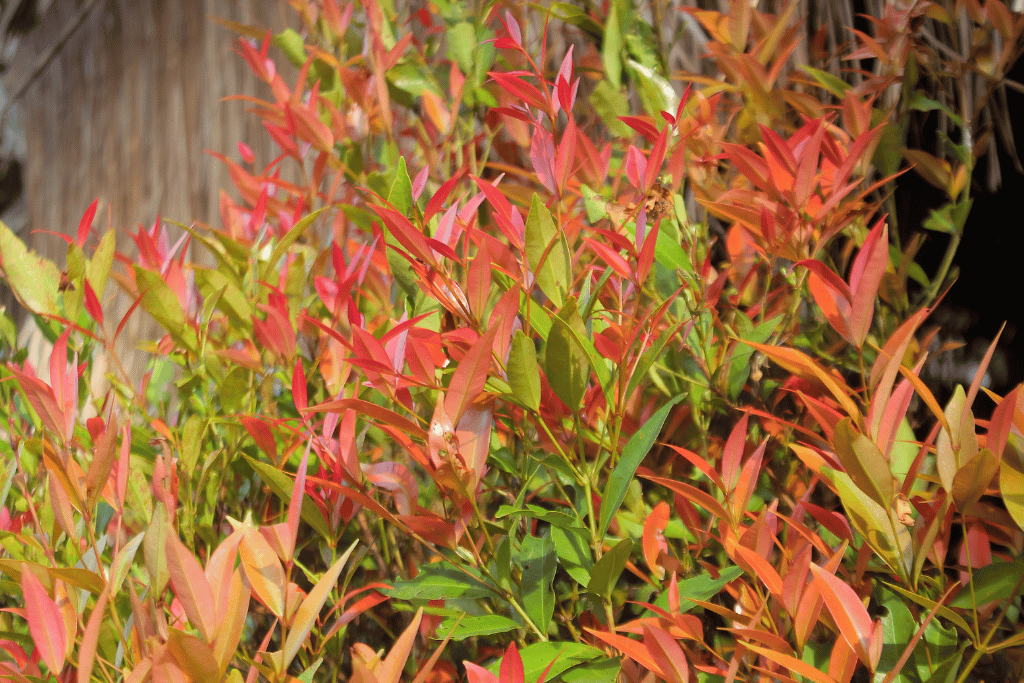
Bamboo plants have become increasingly popular in recent years due to their unique appearance, durability, and versatility. They are often used in home decor, landscaping, and even as a food source. However, the downside to bamboo is that it can be challenging to grow and maintain. That’s why many plant enthusiasts are turning to plants that look like bamboo as a more convenient and low-maintenance alternative.
As someone who has struggled to keep bamboo alive in my garden, I was excited to discover these bamboo doppelgangers and how they can bring the same elegance and beauty to the garden without the headache.
After searching high and low for a bamboo look-alike, I opened myself up to a collection of plants with a similar resemblance.
So if you want to add some exotic flair to your home or garden and are on the hunt for a bamboo lookalike, read on!
How Can You Identify Bamboo?

Bamboo is a type of perennial grass that is native to Asia but can now be found in many parts of the world. It’s known for its tall, slender stalks and lush foliage, which give it its iconic appearance.
One of the defining characteristics of bamboo is its fast growth rate. Some species of bamboo can grow up to several feet per day, making it one of the fastest-growing plants in the world. In addition, bamboo has a unique root system that helps stabilize soil and prevent erosion- what a clever plant!
Bamboo plants come in many different sizes and varieties, with some reaching heights of over 100 feet while others stay under 10 feet tall. Some bamboo species have thin, delicate leaves, while others have broad, lush foliage. Some varieties of bamboo plants are also known for their colorful stalks, ranging from green to yellow to black.
Bamboo is relatively easy to care for and can be grown in a variety of conditions. Most species of bamboo prefer moist, well- draining soil and partial shade, although some varieties can tolerate full sun. Bamboo also benefits from regular fertilization and pruning to keep it looking its best.
In terms of uses, bamboo has many applications, from building materials to textiles to food. It is also commonly used in landscaping and gardening, for its aesthetic appeal and functional properties.
Plants that Look Like Bamboo With Leaves

Dracaena sanderiana, commonly known as Lucky Bamboo, has a similar tall, slender stalk and can be grown in water just like bamboo. It has rich green leaves that give it a bamboo-like appearance.
One of the great things about Lucky Bamboo is that it’s incredibly easy to care for. Unlike its fussy cousin, regular bamboo, Lucky Bamboo doesn’t require much water or sunlight to thrive. In fact, you can grow Lucky Bamboo in just a simple vase filled with water, making it the perfect plant for those of us with less than a green thumb.
But don’t let its ease of care fool you- Lucky Bamboo is still a symbol of good fortune and prosperity in many cultures. In feng shui, for example, lucky bamboo is believed to bring good luck and positive energy to a space. So if you’re looking to attract some good vibes into your home or office, why not give Lucky Bamboo a try?
Of course, like any plant, Lucky Bamboo has its quirks. For one thing, it’s notoriously picky about the type of water it likes. If you use tap water, let it sit out for a few hours to let any chlorine evaporate before adding it to your lucky bamboo vase. And if you notice any yellowing leaves or other signs of stress, try moving your plant to a different location or adjusting the lighting and watering regimen.
Horsetail

Horsetail or Equisetum, has tall, hollow stems with segmented joints, much like bamboo. Its leaves are small and grow in a whorled pattern around the stem, adding to the plant’s bamboo-like appearance.
The long, slender stems and feathery foliage make this plant look like it was plucked straight out of the Jurassic period. And in fact, it has been around for a long, long time- over 300 million years, in fact!
Horsetail plants, also known by their scientific name, Equisetum, are a type of ancient plant that were once as tall as trees. Today, they’re much smaller but no less fascinating. Horsetails grow in dense clumps and can be found in wetlands, marshes, and other damp habitats.
One of the most incredible things about horsetail plants is their unique reproductive method. Rather than producing flowers or seeds, horsetails produce spores that are carried to other parts of the plant or nearby plants. Talk about a creative way to spread your genes!
But before you go rushing out to buy a horsetail plant for your home, there are a few things you should know. For one thing, horsetails can be quite invasive, so be sure to keep them contained in a pot or planter. And while they can handle wet soils, they don’t like to be waterlogged, so be sure to let the soil dry out a bit between waterings.
Overall, though horsetail plants are a unique and interesting addition to any plant collection. Whether you’re a fan of all things prehistoric or just want a plant that looks like it came out of a dinosaur movie, horsetail plants are definitely worth checking out.
Arundo Donax

Commonly known as giant reed, this tall, robust perennial grass that looks like bamboo is found in many parts of the world. This plant is quite the looker with its impressive height and graceful appearance.
But don’t let its looks fool you; this reed means business! In fact, the Arundo donax can grow up to 30 feet tall and spread like wildfire, taking over entire fields in the blink of an eye.
It’s no wonder it’s often referred to as the terminator of crops. This bad boy has been known to cause some severe headaches for farmers and landowners.
Arundo donax is a bit of a troublemaker in the environmental world. It has a reputation for being an invasive species that can wreak havoc on local ecosystems. So if you see this plant out in the wild, it’s probably best to steer clear.
Nandina Domestica

Nandina domestica, also known as heavenly bamboo, is a plant that looks innocent enough but also has an invasive tendency to take over a garden in no time. This plant has thin, delicate leaves that turn red in the fall, giving it a bamboo-like appearance. Its stalks also grow upright, resembling bamboo.
Not only is this plant invasive, but it is also known for its toxic properties, with its berries containing cyanide. Yikes! If that doesn’t make you want to steer clear of this bad boy, I don’t know what will!
Japanese Knotweed

Japanese knotweed, or Fallopia japonica, has tall stalks similar to bamboo. However, this plant is highly invasive and can be challenging to control, so it’s best to avoid planting it altogether.
Originating in East Asia, this plant has taken the world by storm and is now found in many parts of the globe.
One thing that’s immediately striking about the Japanese knotweed is its size. This bad boy can grow up to 10 feet tall and take over entire landscapes with its imposing presence.
Despite the fact that it has a harmless appearance with its pretty pink flowers and bamboo-like stems, it’s incredibly difficult to eradicate once it takes root.
Bamboo Palm

The bamboo palm, or Chamaedorea seifrizii, has long, slender stems with green fronds that give it a bamboo-like appearance. It’s a great indoor plant that can thrive in low-light conditions. This little cutie of a palm tree is small but mighty and has a few tricks up its fronds!
Let’s start with its origin. The bamboo palm is native to Central and South America, where it grows in shady forests and lush jungles. It’s a real tropical treasure, and it’s been making its way into homes and gardens around the world for years.
As for size, the bamboo palm is on the smaller side- it usually grows to be around 5-7 feet tall. But don’t let its petite stature fool you- this plant is a powerhouse for cleaning the air. It’s one of the best air-purifying plants out there, so if you want to breathe easy, the bamboo palm is the way to go.
When it comes to maintenance, this little guy is a piece of cake to care for. It just needs some bright indirect sunlight and regular watering, and it will be as happy as a clam. And if you really want to pamper it, you can give it a little boost with fertilizer every now and then.
Dieffenbachia

Last on the list is the dumb cane, or Dieffenbachia, which has large, broad leaves that grow in an alternating pattern on the stem, resembling bamboo. This plant can be toxic if ingested, so be sure to keep it out of the reach of pets and children.
The dumb cane hails from the tropics of Central and South America, where it grows in the shade of tall trees. It’s a real jungle gem, and it’s been finding its way into homes and gardens around the world for years.
As for size, the dieffenbachia can grow to be pretty tall- sometimes up to 6 feet or more. But it’s not just its height that’s impressive- its leaves are pretty spectacular too. They’re big and bold, with intricate patterns and stunning colors. Talk about making a statement!
When it comes to caring for this bamboo look-alike, it can be a bit tricky. It’s a fussy plant, and it doesn’t like to be overwatered or underfed. But if you give it some bright, indirect sunlight and keep the soil moist but not soggy, it’ll thank you for it. To keep its leaves looking sharp, you can give it a mist every now and then.
All in all, the dieffenbachia is a pretty cool plant; it may be fussy, but its worth every effort especially when you see those big beautiful leaves.
Beyond Bamboo: Discovering Plants That Look Like Bamboo
To sum up, many plants look like bamboo, from the slender nandina to the dieffenbachia. While these plants showcase the feathery foliage of bamboo, there are some lookalikes to be wary of.
The invasive nature of some of these plants is good to know in advance so you can make a calculated decision if you want to add them to your garden. With many other varieties out there to choose from, you are sure to find a bamboo-looking plant that will add a touch of tropical flair to your space.
One of my favorite bamboo-looking plants is the Dieffenbachia; I don’t mind its fussy requirements, and it’s compact enough to stand proudly in my home. Whether you’re looking for a privacy screen or simply a unique addition to your plant collection, there’s sure to be a bamboo lookalike that fits the bill.
Are Your Green Thumbs Feeling a Bit Rusty?
Be-leaf us, our website is the one-stop-shop for all things plant related. From pest control to soil health, we’ve got all the goods for you to swot up on.
So, roll up your sleeves and get ready to get your hands dirty. With our planting tips, you’ll be able to take your plants to a whole new level.
Frequently Asked Questions (FAQ)
What small plant that looks like bamboo?
Chamaedorea seifrizii also known as parlor palm, is a small plant that looks like bamboo. The Parlor palm can grow from 3 to 6 feet tall, and its leaves can reach up to 18 inches long by 12 inches wide.
What indoor plant that looks like bamboo?
Lucky bamboo is an indoor plant that looks like bamboo but is actually from a different genus. This plant can be grown in water and is one of the easiest plants to care for. The stem and leaves have a similar appearance to bamboo.
What water plant that looks like bamboo?
Draceanea sanderiana is a bamboo-looking plant that can be grown in water. You can keep the Draceana sanderiana (lucky bamboo) in a vase of water, but be sure to let the water sit for a few hours first. This will ensure that any chlorine has evaporated and won’t cause any harm to your plant. What is the plant that looks like bamboo?
What is the squash plant with stem that looks like bamboo?
The squash plant with a stem that looks like bamboo is commonly known as bamboo squash or bamboo gourd. It has no relation to bamboo, but its name is a result of the tall, hollow stems.



